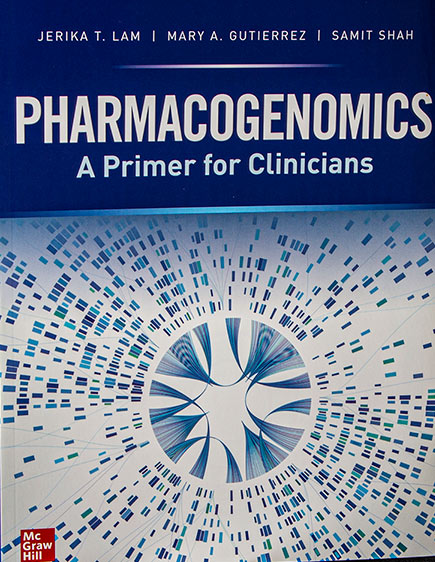Dean’s book helps move pharmacy advancements from the lab to the patient
Imagine that a patient just diagnosed with high blood pressure could know – based on their genome – which of the dozens of hypertension medications available would work best for them.
That’s not a far-off, science-fiction scenario. The tools to gain that knowledge exist, thanks to the science of pharmacogenomics. Pharmacogenomics, the study of how an individual’s genetic make-up influences their response to medication, allows pharmacists to select the best medication and dosage for each patient.
Pharmacogenomics has become part of the curriculum in most pharmacy programs, including the Regis University School of Pharmacy. The challenge, according to Regis pharmacy school Dean Samit Shah, Ph.D., is moving pharmacogenomics from the classroom and research lab into widespread clinical use. Achieving that is the aim of a new book Shah co-edited with two pharmacy professors at Chapman University, Jerika T. Lam and Mary A. Gutierrez.
Pharmacogenomics: A Primer for Clinicians is written for pharmacists who would be leading pharmacogenomics implementation efforts, and for clinicians such as nurse practitioners and physicians who may want to implement pharmacogenomics in a clinical setting, but aren’t sure how to do that.
“Buy-in [among clinicians] is critical in moving the science forward and that’s what this book is trying to address,” Shah told the Pharmacy Podcast Network. “Our goal was to have a good resource for clinicians to go to, to say, ‘if I want to implement [pharmacogenomics] how do I do it? What resources are there to accomplish it? What are the ethical implications?’. ”
There are many pharmacogenomics textbooks geared toward current pharmacy students but few resources for practicing clinicians, Lam said during that same interview. “We felt that there was a gap there,” she said.
Pharmacogenomics does not mean that every time a patient goes to pick up a prescription, the pharmacist will mix up a unique new elixir. What it does mean, Shah said, “Is that it takes away the trial-and error process. It cuts down a patient having to go back saying ‘that anti-anxiety medication didn’t work for me’ and then trying another, and maybe another.”
The genetic testing necessary to make the right call on medication can be done with a cheek swab, Shah said. The cost typically is about $300 or $400, and insurance companies are beginning to see the advantages in covering it.
That kind of prescription accuracy not only benefits patients by potentially providing effective therapies sooner, it can also mean cost savings for patients and insurers, Shah said.
He acknowledged that there are concerns, particularly around issues of privacy and ethics. A 2008 law, the Genetic Information Non-discrimination Act, or GINA, prevents insurance companies and employers from discriminating against anyone based on genetic information. But there can be other ethical concerns, such whether a patient should disclose any genetic information of concern to other family members, or what a pharmacist’s responsibility is should tests reveal a patient’s genetic predisposition to particular cancers or Alzheimer’s disease.
The book discusses such issues, and Shah is confident that as pharmacogenomics practice becomes widespread, consensus will emerge as to how such issues are best handled.
In the meantime, he believes he and others in the field have a responsibility to bring pharmacogenomics and the benefits it provides, into wider practice.
“We have opportunity to really make an impact on healthcare,” he said.
